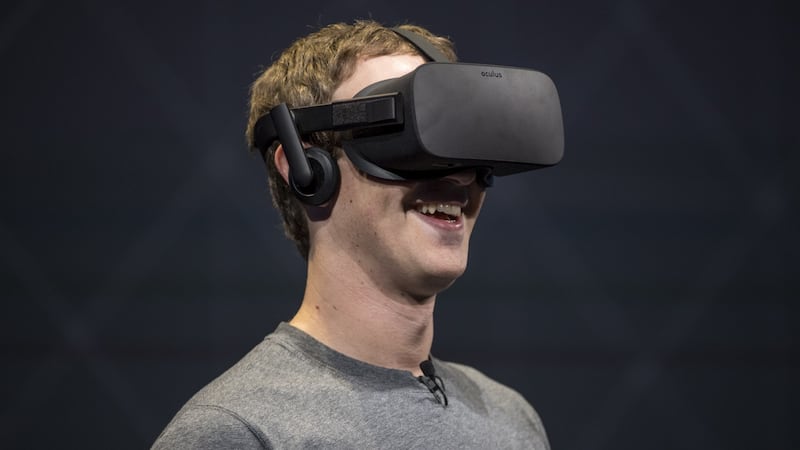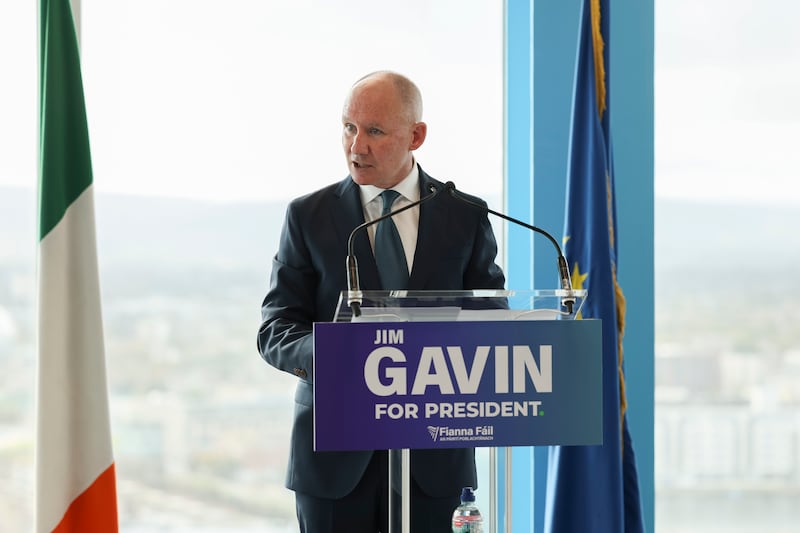Last October, when Mark Zuckerberg, the chief executive of Facebook, announced that the company would change its name to Meta and become a “metaverse company”, he sketched a vision of a utopian future many years off in which billions of people would inhabit immersive digital environments for hours on end, working, socialising and playing games inside virtual and augmented worlds.
In the year since, Meta has spent billions of dollars and assigned thousands of employees to make Zuckerberg’s dream feasible. But Meta’s metaverse efforts have had a rocky start. The company’s flagship virtual-reality game, Horizon Worlds, remains buggy and unpopular, leading Meta to put in place a “quality lockdown” for the rest of the year while it retools the app.
Some Meta employees have complained about frequent strategy shifts that seem tied to Zuckerberg’s whims rather than a cohesive plan. And Meta executives have butted heads over the company’s metaverse strategy, with one senior leader complaining that the amount of money the company had spent on unproven projects made him “sick to my stomach”.
Inside Meta, two employees said, some workers now jokingly refer to key metaverse projects as MMH, for ‘make Mark happy’
The company’s struggle to reshape the business was described in interviews with more than a dozen current and former Meta employees and internal communications obtained by the New York Times. The people spoke on the condition of anonymity because they were not authorised to speak about internal matters.
READ MORE
On Tuesday, Meta unveiled a new VR headset at a developer conference, along with other new metaverse features. The stakes are high for the company, which is racing to transform itself to make up for declines in other parts of its business. TikTok is siphoning younger users away from Facebook and Instagram, Meta’s two big moneymakers, and Apple made privacy changes to its mobile operating system that have cost Meta billions of dollars in advertising revenue.

The company’s stock price has tumbled nearly 60 per cent in the past year — a reflection not just of broader market turbulence, but of some investors’ scepticism that the metaverse will be highly lucrative anytime soon. In late September, the company announced that it would freeze most hiring, and Zuckerberg has warned employees that lay-offs may be coming.
“The pressures Meta’s business is facing in 2022 are acute, significant and not metaverse-related,” said Matthew Ball, an investor and metaverse expert whose advice Zuckerberg has sought. “And there is a risk that almost everything Mark has outlined about the metaverse is right, except the timing is farther out than he imagined.”
In a statement, Andy Stone, a Meta spokesman, said the company believed it was still on the right path.
“Being a cynic about new and innovative technology is easy,” Stone said. “Actually building it is a lot harder — but that’s what we’re doing because we believe the metaverse is the future of computing.”
Zuckerberg successfully overhauled his company a decade ago, getting it to focus on how its products worked on smartphones instead of desktops. He signalled a similar shift last year, saying that investing in the metaverse would allow Meta to make the leap from one technological era to the next.
There are some signs that Meta’s bet has put it ahead of competitors. The company’s consumer VR headset, the Quest 2, is the most popular VR headset on the market with more than 15 million sold, according to outside estimates. Its Oculus VR app — which has since been rebranded Meta Quest — has been installed more than 21 million times on iOS and Android devices, according to an estimate by Sensor Tower, an app analytics firm.
But Meta’s future success depends on the company’s ability to bring virtual and augmented reality tools to far more people.
Meta said in February that its Horizon Worlds game had grown to roughly 300,000 monthly active users — an increase from a few months earlier, but minuscule in comparison with Facebook’s more than 2.9 billion monthly active users. The company declined to provide more up-to-date figures for Horizon Worlds.
Adding to Meta’s woes is that US regulators appear determined to prevent the company from acquiring its way to success, as it did by buying Instagram and WhatsApp. In July, the Federal Trade Commission sued Meta to block it from acquiring Within, the maker of a popular VR fitness app. Meta is fighting the agency’s lawsuit, which it has called “wrong on the facts and the law”.
Zuckerberg, determined to recast his public image after years in the limelight for unpopular decisions about political speech on Facebook, has surprised some employees by making himself the innovator face of the metaverse push. Demonstrations and mock-ups of Meta’s latest metaverse technologies feature footage of Zuckerberg performing VR versions of his hobbies, including fencing and a surfing-like watersport called hydrofoiling. The chief executive recently went on Joe Rogan’s podcast, where he told the popular comedian that building an immersive metaverse was his “holy grail”.
His involvement has backfired at times. In August, Zuckerberg posted a screenshot of his Horizon Worlds avatar on his Facebook page, along with an announcement that the app was expanding into France and Spain. But the avatar’s flat, cartoonish look was roundly mocked. (One commenter compared it to “a 2002 Nintendo GameCube release”.)
After that response, Zuckerberg and other executives directed employees to give priority to improving the appearance of avatars, according to two employees. Stone, the Facebook spokesman, characterised Zuckerberg’s reaction to the avatar backlash as “frustrated”, but did not provide additional details.
A new version of Zuckerberg’s digital appearance was fast-tracked, the two employees said, along with updates to other Horizon Worlds avatars that had been in the works.
Four days after Zuckerberg’s original post, he shared that upgraded digital version of himself, conceding that his first avatar was “pretty basic” while the “graphics in Horizon are capable of much more”. One Meta graphic artist claimed in a LinkedIn post, which has since been deleted, that he and his team had designed roughly 40 versions of Zuckerberg’s face over a four-week period before a final version was approved.

Zuckerberg’s zeal for the metaverse has been met with scepticism by some Meta employees. This year, he urged teams to hold meetings inside Meta’s Horizon Workrooms app, which allows users to gather in virtual conference rooms. But many employees didn’t own VR headsets or hadn’t set them up yet and had to scramble to buy and register devices before managers caught on, according to one person with knowledge of the events.
In a May poll of 1,000 Meta employees conducted by Blind, an anonymous professional social network, only 58 per cent said they understood the company’s metaverse strategy. Employees have also grumbled about the high turnover and frequent shuffling of employees as Zuckerberg’s priorities change. Inside Meta, two employees said, some workers now jokingly refer to key metaverse projects as MMH, for “make Mark happy”.
As the pressure grows, Zuckerberg has sent a clear message to Meta employees: Get on board or get out
In September, Vishal Shah, the vice-president in charge of Meta’s metaverse division, wrote on an internal message board that he was disappointed in how few Meta employees were using Horizon Worlds, according to a post obtained by the New York Times.
In his post, which was first reported by the Verge, Shah said that managers would begin tracking workers’ use of Horizon Worlds, and said that testing their own technology was essential.
“Why don’t we love the product we’ve built so much that we use it all the time?” Shah asked. “The simple truth is, if we don’t love it, how can we expect our users to love it?”
Shah, who declined to comment for this article, also said in his post that Horizon would undergo a “quality lockdown” for the rest of the year to “raise the overall craft and delight of our product”.
As Meta has struggled to grow its metaverse, some at the company have suggested unconventional ideas for bringing in new users. This summer, three Meta employees proposed marketing VR headsets to Americans who received student debt relief from the Biden administration, believing it could boost sales of headsets by 20 per cent, according to an internal post viewed by the New York Times.
“This is an opportunity for Meta Quest growth, as there is evidence that past federal stimulus spurred growth,” the analysis read. It does not appear that the company acted on the advice.
One prominent insider who has objected to Zuckerberg’s approach to the metaverse is John Carmack, a well-known game developer and former chief technology officer of Oculus, the VR company Facebook acquired for roughly $2 billion in 2014. He continues to work part-time at Meta as an adviser.
In a podcast interview in August, Carmack said the scale of Meta’s metaverse bet — last year, it reported a $10 billion loss in the division housing its AR and VR units — made him “sick to my stomach thinking about that much money being spent”. He added that Meta’s development of the metaverse has been hampered by big-company bureaucracy and concerns about issues such as diversity and privacy.
Carmack has also spoken out on Workplace, Meta’s internal message board. In posts obtained by the New York Times, Carmack, who spoke at the developer conference on Tuesday, criticised features of the company’s VR headsets, calling the need to run software updates before using them “extremely bad for user enjoyment”.
Carmack did not respond to a request for comment.
Carmack’s criticism has put him at odds with executives such as Andrew Bosworth, Meta’s chief technology officer, who oversaw VR efforts for years and is a close ally of Zuckerberg’s. Carmack, according to four employees who have worked with him, has urged the company to think about the metaverse primarily from the immediate user experience, while Bosworth has approached it from a longer-term point of view with a focus on business opportunities.
As the pressure grows, Zuckerberg has sent a clear message to Meta employees: Get on board or get out. In a June meeting first reported by Reuters, the 38-year-old billionaire noted that “there are probably a bunch of people at the company who shouldn’t be here” and that he’d be “turning up the heat” on expectations and goals, according to copies of his comments that were shared with the New York Times.
Faced with possible lay-offs, some Meta employees have started to convey more enthusiasm for the metaverse. More teams have been conducting meetings inside Horizon Workrooms in recent months, several employees said.
But the transition has been rocky. Earlier this year, Bosworth tried to lead a staff meeting inside Horizon Workrooms, according to an employee who was present.
The meeting was thwarted by technical glitches and the team ended up using Zoom, the employee said.
This article originally appeared in the New York Times


















